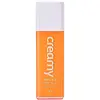What's inside
What's inside
 Key Ingredients
Key Ingredients

 Benefits
Benefits

 Concerns
Concerns

 Ingredients Side-by-side
Ingredients Side-by-side

Water
Skin ConditioningGlycerin
HumectantAscorbyl Glucoside
AntioxidantSodium Hyaluronate
HumectantAlbizia Julibrissin Bark Extract
MaskingHeptyl Glucoside
PEG-40 Hydrogenated Castor Oil
EmulsifyingPhenoxyethanol
PreservativeSodium Levulinate
Skin ConditioningBenzyl Alcohol
PerfumingMarrubium Vulgare Extract
Skin ConditioningSodium Anisate
AntimicrobialXanthan Gum
EmulsifyingSodium Hydroxide
BufferingPhytic Acid
Ethylhexylglycerin
Skin ConditioningParfum
MaskingDehydroacetic Acid
PreservativeLinalool
PerfumingHeptanol
PerfumingSodium Benzoate
MaskingCitric Acid
BufferingLimonene
PerfumingWater, Glycerin, Ascorbyl Glucoside, Sodium Hyaluronate, Albizia Julibrissin Bark Extract, Heptyl Glucoside, PEG-40 Hydrogenated Castor Oil, Phenoxyethanol, Sodium Levulinate, Benzyl Alcohol, Marrubium Vulgare Extract, Sodium Anisate, Xanthan Gum, Sodium Hydroxide, Phytic Acid, Ethylhexylglycerin, Parfum, Dehydroacetic Acid, Linalool, Heptanol, Sodium Benzoate, Citric Acid, Limonene
Water
Skin ConditioningAscorbyl Glucoside
AntioxidantDipropylene Glycol
HumectantGlycerin
HumectantEthoxydiglycol
Humectant3-O-Ethyl Ascorbic Acid
Skin ConditioningTocopheryl Acetate
AntioxidantXanthan Gum
EmulsifyingFerulic Acid
AntimicrobialSclerotium Gum
Emulsion StabilisingLecithin
EmollientPhenoxyethanol
PreservativePullulan
Silica
AbrasiveEthylhexylglycerin
Skin ConditioningSodium Hyaluronate
HumectantIngredients Explained
These ingredients are found in both products.
Ingredients higher up in an ingredient list are typically present in a larger amount.
Ascorbyl Glucoside is a stable form of Vitamin C. It is created by combining glucose from starch.
When applied to skin, Ascorbyl Glucoside turns into Ascorbic Acid.
Ascorbyl Glucoside is an antioxidant. Antioxidants help fight free-radicals, or molecules that may damage skin cells.
It can help to reduce redness, improve skin texture, reduce the effects of aging, reduce the visibility of dark spots, and brighten skin.
Read more about other types of Vitamin C:
Learn more about Ascorbyl GlucosideEthylhexylglycerin (we can't pronounce this either) is commonly used as a preservative and skin softener. It is derived from glyceryl.
You might see Ethylhexylglycerin often paired with other preservatives such as phenoxyethanol. Ethylhexylglycerin has been found to increase the effectiveness of these other preservatives.
Glycerin is already naturally found in your skin. It helps moisturize and protect your skin.
A study from 2016 found glycerin to be more effective as a humectant than AHAs and hyaluronic acid.
As a humectant, it helps the skin stay hydrated by pulling moisture to your skin. The low molecular weight of glycerin allows it to pull moisture into the deeper layers of your skin.
Hydrated skin improves your skin barrier; Your skin barrier helps protect against irritants and bacteria.
Glycerin has also been found to have antimicrobial and antiviral properties. Due to these properties, glycerin is often used in wound and burn treatments.
In cosmetics, glycerin is usually derived from plants such as soybean or palm. However, it can also be sourced from animals, such as tallow or animal fat.
This ingredient is organic, colorless, odorless, and non-toxic.
Glycerin is the name for this ingredient in American English. British English uses Glycerol/Glycerine.
Learn more about GlycerinPhenoxyethanol is a preservative that has germicide, antimicrobial, and aromatic properties. Studies show that phenoxyethanol can prevent microbial growth. By itself, it has a scent that is similar to that of a rose.
It's often used in formulations along with Caprylyl Glycol to preserve the shelf life of products.
Sodium Hyaluronate is hyaluronic acid's salt form. It is commonly derived from the sodium salt of hyaluronic acid.
Like hyaluronic acid, it is great at holding water and acts as a humectant. This makes it a great skin hydrating ingredient.
Sodium Hyaluronate is naturally occurring in our bodies and is mostly found in eye fluid and joints.
These are some other common types of Hyaluronic Acid:
Learn more about Sodium HyaluronateWater. It's the most common cosmetic ingredient of all. You'll usually see it at the top of ingredient lists, meaning that it makes up the largest part of the product.
So why is it so popular? Water most often acts as a solvent - this means that it helps dissolve other ingredients into the formulation.
You'll also recognize water as that liquid we all need to stay alive. If you see this, drink a glass of water. Stay hydrated!
Learn more about WaterXanthan gum is used as a stabilizer and thickener within cosmetic products. It helps give products a sticky, thick feeling - preventing them from being too runny.
On the technical side of things, xanthan gum is a polysaccharide - a combination consisting of multiple sugar molecules bonded together.
Xanthan gum is a pretty common and great ingredient. It is a natural, non-toxic, non-irritating ingredient that is also commonly used in food products.
Learn more about Xanthan Gum